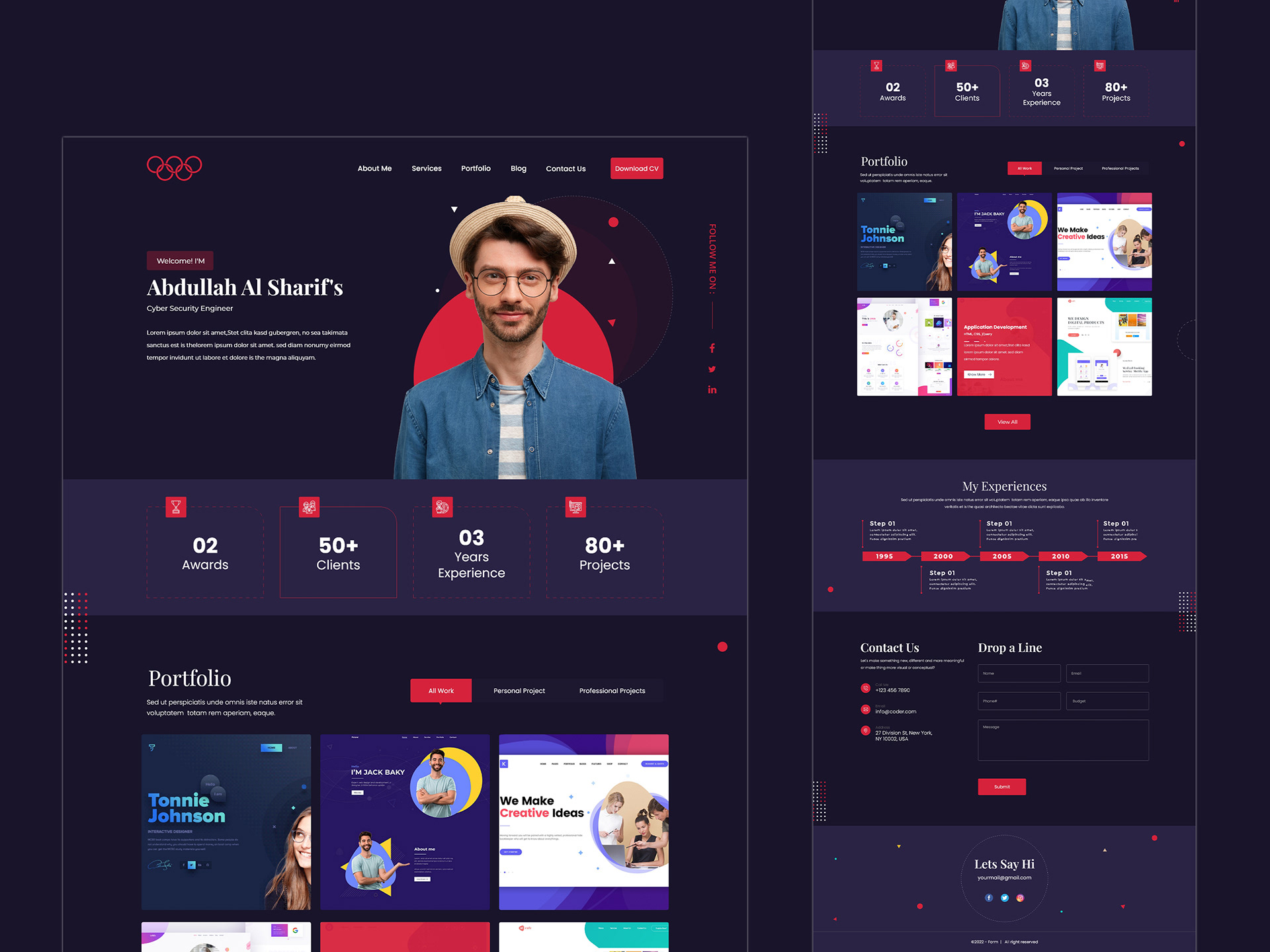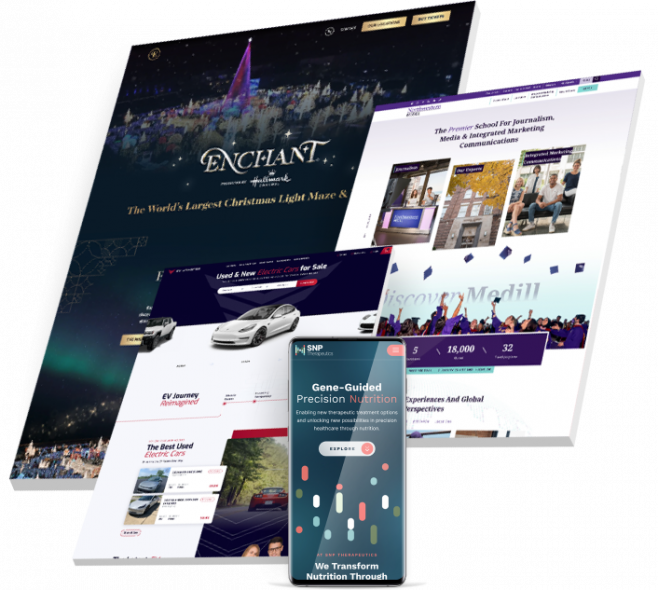How to Improve Your Website Design for Better Conversion Rates
How to Improve Your Website Design for Better Conversion Rates
Blog Article
Modern Site Design That Records Focus and Transforms
In a progressively electronic landscape, modern-day web site design has arised as a crucial aspect in catching user attention and driving conversions. By purposefully utilizing aesthetic power structure, responsive layouts, and engaging interactive components, developers can produce experiences that not just bring in site visitors yet also assist in purposeful interactions. Efficient call-to-action approaches play an important duty in leading individuals toward preferred outcomes. As we check out these important parts, it becomes clear that recognizing their interaction can substantially impact a web site's performance and individual contentment. What are the crucial elements that truly make a difference?
Value of Visual Pecking Order
Aesthetic pecking order is a critical component in internet site design, as it overviews customers' focus and boosts their general experience. By strategically organizing material, developers can guide individuals to one of the most essential information initially, thereby increasing involvement and boosting functionality. Effective aesthetic pecking order employs various strategies, consisting of size, spacing, shade, and comparison. Bigger aspects naturally attract the eye, while contrasting colors can stress key messages, making them attract attention among even more suppressed parts.
Including a sensible flow in material setup is essential; as an example, positioning the most important details on top of a web page cultivates prompt acknowledgment. Furthermore, regular use typography, such as varying font dimensions and designs, assists develop a clear content structure. This organization not just help in navigating but likewise develops trust fund, as customers feel a lot more comfy when they can easily find what they are searching for.
Eventually, a well-executed visual hierarchy not only boosts aesthetic appeal but likewise significantly impacts user behavior. By prioritizing crucial elements and making sure a smooth experience, developers can effectively convert site visitors right into customers, enhancing the significance of this foundational style principle in contemporary web site growth.
Responsive Layout for All Devices
Creating a seamless experience across various devices is vital in today's electronic landscape, where individuals gain access to websites from smartphones, desktop computers, and tablets alike. Responsive style is a crucial technique that makes sure web sites adjust fluidly to different display sizes, resolutions, and alignments. By using flexible grids, pictures, and CSS media questions, developers can create formats that preserve aesthetic stability and functionality, no matter the tool being utilized.
The importance of receptive design prolongs past aesthetic appeals; it straight affects user interaction and conversion rates. A website that works well on all devices motivates longer gos to and reduces bounce rates, as individuals are most likely to communicate with web content that is easy to navigate. Search engines, specifically Google, prioritize mobile-friendly sites in their positions, making responsive style an essential component of search engine optimization (SEARCH ENGINE OPTIMIZATION)
Incorporating responsive layout not only boosts user experience however additionally enhances the growth process. By developing a single site that functions throughout devices, services can conserve time and sources contrasted to developing different mobile and desktop variations. Eventually, responsive style is a basic approach for modern-day website design, making sure access and fulfillment for all individuals, no matter of their tool.
Involving Interactive Components
While a receptive layout lays the groundwork for a practical web site, integrating appealing interactive aspects is crucial for capturing user attention and promoting deeper connections. Website Design. Interactive components, such as computer animations, tests, and clickable infographics, produce a much more dynamic user experience, encouraging visitors to spend even more time on the website
Integrating interactive features can also guide customers via facility info, making it much easier to digest content. For example, interactive sliders can show product variants, while ingrained videos can offer demos or endorsements that resonate more than fixed pictures or text. Furthermore, gamification strategies, like benefits for completing jobs or involving with web content, can improve user inspiration and retention.
Efficient usage of interactive aspects not just enriches the individual experience but can additionally lead to greater conversion prices. It is important to stabilize interactivity with efficiency; overly complicated functions might hinder site speed, my site negatively affecting user contentment.
Structured Navigating Practices
Reliable navigation is a foundation of any kind of effective web site, as it directly affects user experience and material accessibility. Structured navigating methods make certain that customers can conveniently find info, boosting their communication with the website. A well-structured navigation food selection must be straightforward and instinctive, usually featuring a limited variety of primary classifications to stay clear of frustrating site visitors.
To attain structured navigation, designers need to prioritize a hierarchical framework that practically arranges material. Executing breadcrumb tracks can offer users with context about their current location within the site, permitting seamless backtracking. Furthermore, making use of drop-down menus can properly save room while still giving accessibility to subcategories.
Responsive design is vital, as navigation needs to be useful across all tools (Website Design). Mobile individuals, in specific, benefit from touch-friendly food selections and collapsible areas that preserve use without jeopardizing looks

Efficient Call-to-Action Techniques
A well-crafted call-to-action (CTA) is necessary for assisting users toward desired results on an internet site, as it encourages them to engage with web content or buy. To maximize their performance, CTAs ought to be clear, engaging, and strategically positioned throughout the site.
First, make use of go to my site action-oriented language that interacts urgency or worth, such as "Get going," "Sign up with Now," or "Case Your Discount." This language not only inspires individuals yet also establishes clear assumptions regarding the next steps.
Second, consider style components; CTAs need to attract attention visually with contrasting colors, enough whitespace, and famous positioning. A button that is simple to see and click boosts the likelihood of individual communication.
In addition, personalizing CTAs based on individual behavior or demographics can dramatically improve involvement. Customized messages reverberate more with customers, driving higher conversion prices.

Verdict
Finally, modern internet site style highlights the assimilation of visual power structure, responsive layouts, involving interactive components, streamlined navigation, and effective call-to-action methods. These components jointly improve individual experience, guaranteeing that site visitors stay involved and inspired to discover content even more. By prioritizing these style concepts, organizations can substantially boost customer retention and conversion prices, inevitably resulting in better success in the digital landscape. The constant development of website design underscores its vital role in effective on the internet communication and advertising.
In a significantly digital landscape, modern-day site design basics has actually arised as a crucial factor in recording customer attention and driving conversions.Visual pecking order is a vital aspect in website layout, as it overviews individuals' attention and boosts their general experience.The significance of responsive design expands past aesthetic appeals; it straight influences customer involvement and conversion rates.Integrating responsive layout not only improves customer experience however also enhances the development procedure. Ultimately, receptive design is a basic technique for modern website layout, guaranteeing accessibility and contentment for all individuals, no matter of their device.
Report this page